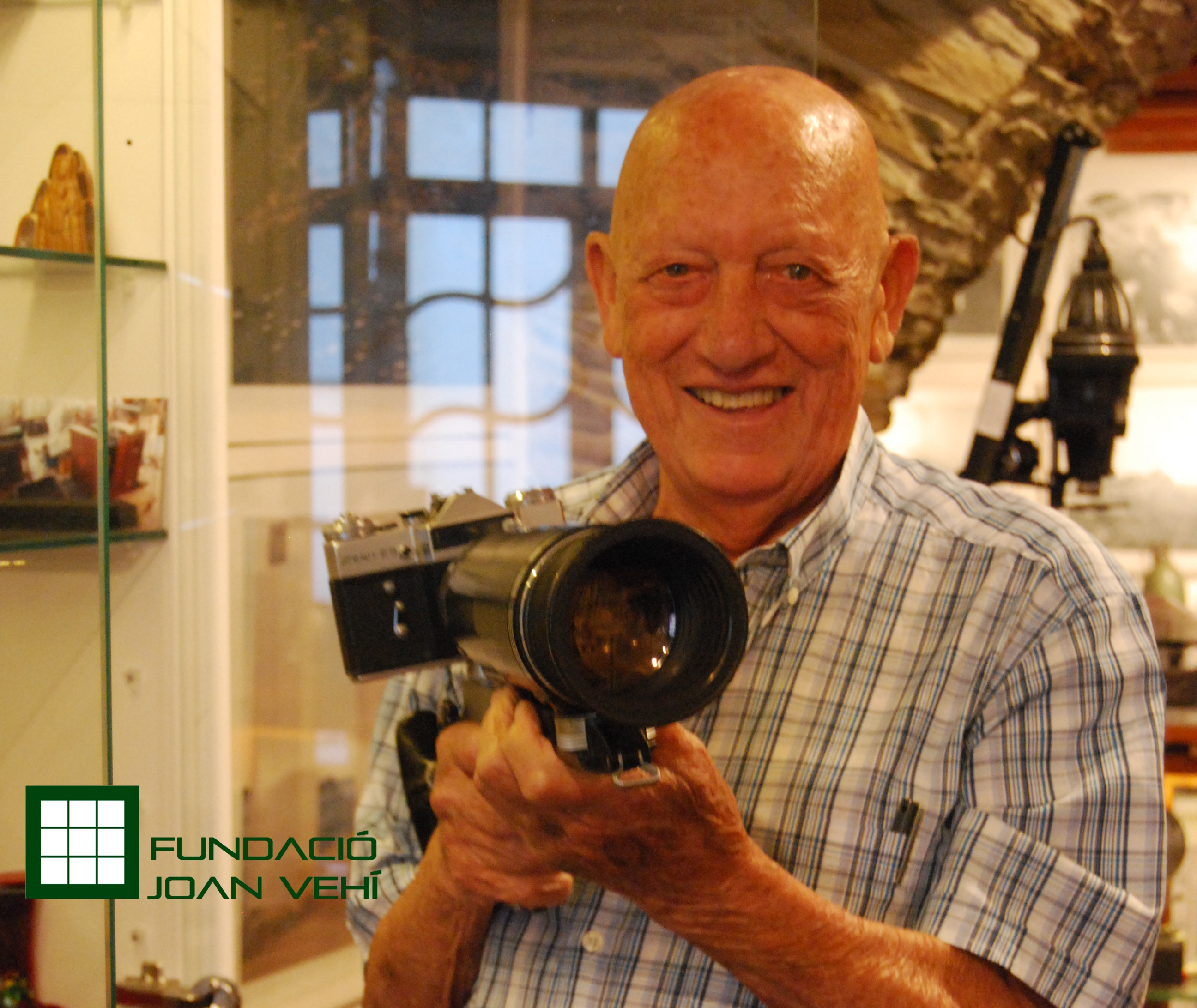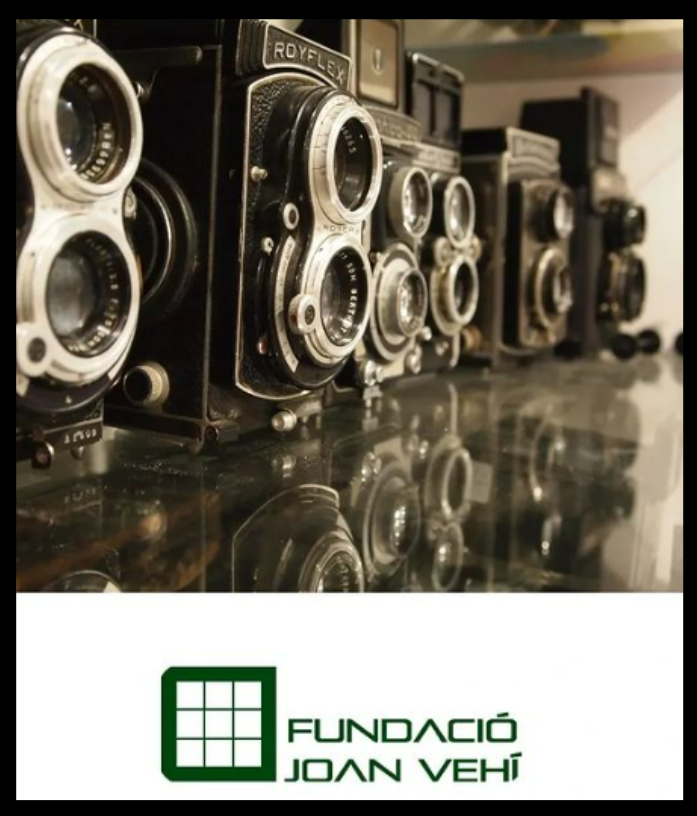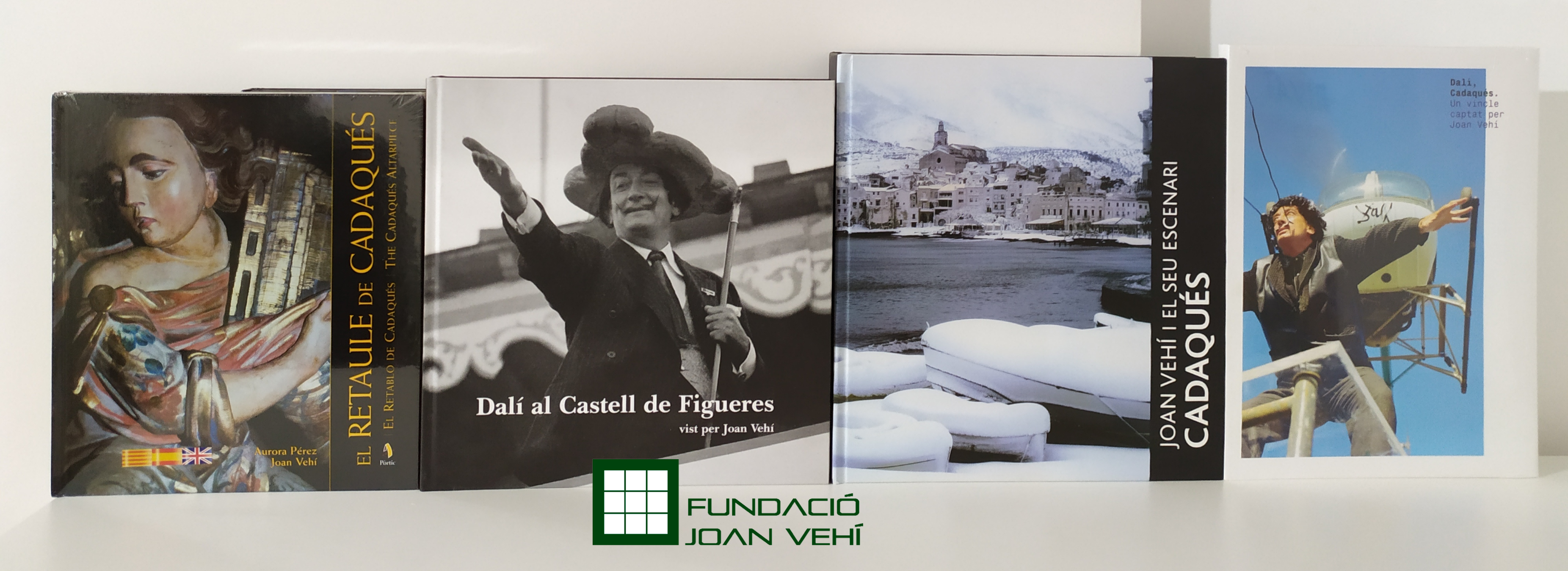
Joan Vehí - Biography
The biography we reproduce below is based on the writing by Inés Padrosa i Gorgot and published in 2003 in the Revista de Girona. It describes very accurately the life and passion of Joan Vehí. We reproduce it to make it easier to read on the website and to be able to include different direct links to the information it provides, but you can download the full original publication HERE.
Joan Vehí, photographer and collector, the living history of Cadaqués - by Inès Padrosa i Gorgot
Born in Cadaqués on May 29, 1929, Joan Vehí had a childhood and adolescence typical of any child in the town: rooted in local customs, linked to the sea and the land, he helped the family in everything they needed. It was during one of these tasks - the 1945 harvest - that the situation arose that led to the interference in his life of a new and unusual hobby at the time: photography. At that year's harvest there was a guest with a camera who kept taking pictures while the people of Cadaqués were working in the vineyard until the moment came when he realized that there was no roller in the camera. The moment was so disappointing that it pushed him to give the device away to the teenager next to him: Joan Vehí.
The reporter
For Vehí, an active young man who was already involved in some local activities, this gift allowed him to print everything that seemed likely to be portrayed, and this is how he became a reporter who left records of daily events and no apparent relevance at the time, other relatives, and others of the most varied parties, weddings and celebrations in the municipality. He instantly collected the footprints left by both local and popular figures with temporary stays in the town - actors like La Chunga, Samantha Eggar, politicians like Tarradellas, art critics like Romero and Santos Torroella, painters like Dalí and Pitxot, architects like Bombelli, King Joan Carles or Cassià Just, from Montserrat, who, having not established any official photographer in the town, today constitute the graphic history of the town.

The collector
Over the years, his passion for photography has been joined by his passion for photography. And to the well-nourished collection of cameras -some of their own and others gifted-, and he added the graphic material -photographs, postcards, slides, glass clichés ...- that came into his hands, whether for family legacy or as a gift from those who knew his hobby. Among the different cameras with which he has practiced the technique, the one he remembers most fondly and reluctantly is a three-lens Voigländler; and I repent because he was robbed of the cupboard where he had kept it, with the case left as a deception.
This has been and is, for our biographer, his main hobby while his occupation has been the carpentry trade. And circumstances wanted the confluence of these two tasks to lead him to unsuspected roads.
Dalí's carpenter
After learning in the same village, in 1951 he decided to open a carpentry shop on his own. Thanks to its good execution, it was proposed by the contractor Puignau to Salvador Dalí, so that he could prepare all kinds of carpentry work for his house in Portlligat, a relationship that began in 1952. From that date, in rather than working on the basic issues of the house, he prepared the frames for the paintings (without having counted them, he states that thousands), among which were many large ones, the packaging ... He also executed furniture designed by Dalí. It was not easy to find the interpreter to materialize the ideas that arose from the effervescent mind of the painter. But Dalí knew that in Cadaqués he could count on the person who would solve it: Joan Vehí. He never objected to his sketches, on the contrary, he found a way to find solutions and found them.
Most of the accessories made were, by the express will of the painter, made of olive wood, with the intention of giving way to the wood of the olive trees that died due to the frost of 1956. In any case, explains Vehí, "l "Olive tree is a very difficult material to work with, both because of its hardness and because the veins come from the other side." However, the tables, tablets, desks ... were taking shape. His is the famous olive cross (made in 1956) that served as a model for the Christ of Portlligat, or a table that rests on a triangle (1957). Dalí had the idea and prepared the sketch and he put in it the skill of execution and the right measures.

Vehí and Dalí became acquainted, and work conversations became social gatherings in which the painter became interested in the town's affairs. As we can imagine, Vehí, who could not help but carry the camera, did not stop doing so when he visited the painter, and sometimes it was Dalí himself who required him to go there with the device and you portrayed him. In one of these meetings, Vehí recalls, he was natural, as he was, without posing or comedy. "Dalí didn't mind being portrayed, on the contrary: he was good at it. He really liked being photographed and always surprised you with an original and artistic gesture." All in all, if Vehí has the gift of being a good wood craftsman, on the photographic side his eye acts as the lens of the best cameras.
The photographic archive
In 1996 he closed the carpentry and dedicated the space to a permanent exhibition of his photographic collections. Joan Vehí's photographic archive currently consists of some 60,000 negatives, some 20,000 slides, as well as glass clichés and an indeterminate number of positives, a material that spans from 1900 to the present day.

The publications
Some of his photos have been published by various newspapers such as La Vanguardia, Destino, Diari de Girona, the Empordà ... It is clear that, depending on the periods in which they were reproduced, the most common is not to find the authorship; we already know that, at one point, he was not strict enough on these issues. Lately, they have been asking for his photographs for different jobs. In Cadaqués, however, his career has been recognized for years. In 1980 he was the first time he was invited to an exhibition, in which Richard Hamilton, considered the father of pop art, also participated. Later, his work has been shown in different places in Cadaqués, in the casino-society L'Amistat, in the Museum, and he has also been asked to illustrate festive programs on various topics in the town, or to accompany monographs. such as that of Enric Trilla Naufrags a la mar de l'Alt Empordà (1944), Cadaqués autèntic (1998) by Heribert Gispert, Topònims de Cadaqués (1999) by Firmo Ferrer or Manuel Parés, La Llum d'Estrella Casas and Costa (1999), L'Escala. Four Centenaries; light, water and fire (1999). In 1970, the film El faro del fin del mundo, a film version of Jules Verne's novel Le phare du boute du monde, was shot in 1970, starring actors such as Yul Brynner and Samantha Eggar. and Fernando Rey. Our biographer, Joan Vehí, portrayed the actors and different moments of the ephemeris that have served Lluís Molinas to complete the part of the text related to the event in the monograph La Costa Brava. A set for the cinema (2002).
However, in the field of publications, the most important to date is his contribution to Aurora Perez's monograph The Baroque Altarpiece of Cadaqués (2001). When the presentation of the book took place, at the headquarters of the Alt Empordà County Council, Joan Vehí explained that her desire was to be able to photograph the altarpiece of the parish church in detail, but despite having tried, no he could get the right perspective given the size of the art ensemble. He saw the sky open to him when, on the occasion of its restoration, in 1993, the scaffolding was erected; then he was able to fulfill his wish: he portrayed to the smallest detail the altarpiece, images that have been basic to illustrate the study of the baroque altarpiece.

The projects
In recent months, the news that a person from Cadaqués had unpublished photographs of Salvador Dalí has spread to the media and has caused him so much frustration that he has been interviewed by newspapers on the mainland and abroad, and by national and foreign television. (like the BBC). One of these programs, Tarasca, was recorded in 2002, and the documentary was broadcast on Sunday 22 December under the title Fusta de mestre (The relationship between Dalí and Joan Vehí). In the course of the projection, his relationship with the painter is reflected. This year, this program has been awarded the Carles Rahola Prize for Journalism in the town of Cadaqués.
Joan Vehí will die on May 4, 2020 at 90 years of age. A person highly esteemed by the people, who has had the chance to taste the ressò of his work, and verify with the mastery of the two techniques -the art of the whip and the photographic one- and his human dimension, generous , simple and natural l'han portat, with Dalí com a springboard, to transcend from the local to the universal.
